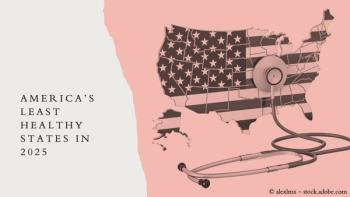
PCMH accreditation: Is it worth it?
As more physicians consider whether transitioning to a patient-centered medical home model is right for their practice, experts weigh in on the benefits-and challenges-of making it official.
If your practice is thinking about adopting a patient-centered medical home (PCMH) model, evaluating the significance of accreditation should become part of the equation. First, is accreditation necessary? Second, what are the benefits of fulfilling the requirements? Then, how would a practice successfully undertake and complete the process?
Accreditation can provide a roadmap for becoming a PCMH. A subset of practices already have received PCMH accreditation from a certifying body. There are several national programs that award this distinction, including the
“Many of these programs provide support and technical assistance to the practices, and this can be invaluable,” says Marci Nielsen, PhD, MPH, chief executive officer of the
Why you should become accredited
PCMH accreditation often is required to obtain an increase in reimbursement from a health plan. In a global capitation arrangement, a provider is reimbursed per-member per-month (PMPM) for the entire network population. A payer needs external validation to justify compensating one provider differently from another.
PCMH accreditation signifies that a provider has become an advanced primary care practice. This designation means that the practice has undergone a transformation in quality and safety enhancement and has established a foundation for coordination across the continuum of care. It offers extended hours, care management to patients with chronic illnesses, behavioral health integration, or other services, Nielsen says.
Related:
In addition, Medicare likely will use some form of accreditation to justify bonuses and other payment boosts for PCMHs under its future value-based payment programs now that the Sustainable Growth Rate formula has been eliminated.
From a patient’s perspective, accreditation indicates that a practice offers enhanced services and higher quality of care. “We have a fair amount of work to do because patients are still unfamiliar with the term ‘medical home,’ ” Nielsen says. “PCMHs are increasingly looking to engage patients and families as partners in quality improvement. Patient engagement at this level of organizational change will need to become a much more earnest part of primary care reform if practices are truly going to transform into patient-centered medical homes.”
Differing standards?
As more primary care practices express interest in PCMH accreditation, stakeholders-from payers to policymakers and patients-have voiced concerns about variations in the qualifying criteria. “Evidence suggests that there may be substantial differences and even tension between the achievement of medical home ‘recognition’ and meaningful transformation,” Nielsen says. Some programs have come under fire for being too administratively burdensome and overly focused on processes rather than outcomes.
“Accreditation can fail if people approach it as just a check-the-box exercise, but don’t actually focus on the bigger picture of the goals they’re trying to achieve,” says David Meyers, MD, chief medical officer at the
“AHRQ is very supportive of the goals for the patient-centered medical home,” which places an emphasis on comprehensive and accessible care, Meyers says. The ideals of PCMH dovetail with “our vision of building a national healthcare system that can provide high-quality affordable care to all Americans.”
Related:
PCMH recognition programs vary in the amount of required documentation, application costs and overall efforts. Practices should research these programs and determine which one best suits their needs. Most incentive programs, including state Medicaid options, specify the type of recognition that practices must achieve to participate. Many physician organizations-such as the
“There are many roads to PCMH. Many practices begin the journey to improve the quality of care they provide to their patients,” he says. “Others are interested in participating in incentive programs that require PCMH recognition.”
A starting place
Whichever route a practice pursues, accreditation should be viewed as a starting place. Much like earning a medical degree, it takes ongoing education to fully adopt the PCMH model and realize its benefits.
“The next step is taking what you learn from the recognition or accreditation exercise and truly using it to guide transformational work. This can’t be emphasized enough,” says Nicole Deaner, MSW, director of systems transformation at
“We often hear docs saying, ‘OK we’ve got my PCMH recognition; now I can go back to what I was doing.’ Practices and systems often think of it as an endpoint, but we think of it as a beginning point, allowing the end user to see what their gaps and strengths are and to outline a path forward for transformation,” Deaner says.
Pursuing accreditation and recognition helps assess which components are already in place at various levels and functioning effectively, while identifying areas needing more attention to achieve results. “Often, PCMH is a nebulous and ambiguous concept,” she says. However, it lends practices and systems guidance in making gradual and lasting changes and provides a structure around which to base transformation efforts.
‘Shifting priorities’
The complexity of the PCMH transformation varies as physicians strive “to meet shifting priorities in primary care practice.”
While accreditation serves as “an overarching framework using the standards as a blueprint,” the process will be easier for some practices than others, says Lon Berkeley, MS, co-project lead of the
“It really depends on where the practice begins relative to already implemented PCMH requirements to what it still needs to accomplish,” he says. “We suggest that a self-assessment or gap analysis should be the first step because it determines how far you have to jump.” For example, a practice would experience a smoother transition if electronic health records are already in place, as well as systems for coordinating with specialists and for patients to receive round-the-clock medical opinions as needed.
The PCMH certification option builds upon Joint Commission accreditation, which affirms compliance with a wide range of both practice- and patient-focused standards, including environment of care, medication management and leadership. Obtaining PCMH certification entails meeting additional standards that pertain to the characteristics of care coordination, access to care, patient-centeredness, comprehensiveness of care, and systems based on quality and safety, Berkeley says.
After accreditation
After a practice obtains Joint Commission accreditation and PCMH certification, the process to maintain it should be ongoing. “This is not just a one-time evaluation,” he says, adding that a practice has to demonstrate continued compliance to The Joint Commission, which also conducts a site visit every three years.
The NCQA certifies by reviewing evidence provided by the practice through an application process. Instead of “accreditation,” the organization prefers the term “recognition” to describe the PCMH certification that it awards. “It’s a voluntary program, but usually people have some motivation for doing it,” says Margaret E. O’Kane, MS, NCQA president.
Related:
A sponsor such as a health plan, Medicare or Medicare with a PCMH project is often the catalyst that pays a care management fee that enables a practice to better manage a panel of patients according to evidence-based guidelines, O’Kane explains. This type of care management includes support for individuals with complex needs. It entails coordinating laboratory and radiology results and following up on abnormal findings, visits to specialists, emergencies and other aspects of the continuum of care.
Tracking quality measures-such as a reduction in emergency department visits due to successful PCMH integration-involves more responsibility and should be rewarded appropriately, O’Kane says. Practices that accomplish this feat are not only helping their patients, but are “making a difference in their neighborhoods.” Being systematic and organized is “the secret of quality,” according to O’Kane.
This undertaking often requires a sponsor, such as a health plan, or a Medicaid or Medicare program with a PCMH project in the works. A sponsor pays the practice a care management fee or higher reimbursement for successfully managing the health of a panel of patients. In realizing that a fee-for-service system hasn’t enhanced the quality of care, some payers are offering assistance to practices transforming into patient-centered medical homes. This additional fee supports functions that aren’t part of the regularly reimbursed patient visit, O’Kane says.
“Primary care is central in caring for the whole patient and reducing fragmentation of care. As the delivery system continues the shift towards value over volume, measurement and accountability at the practice level become even more relevant,” she says. “Research confirms that medical homes can lead to higher quality and lower costs, and can improve patient and provider experiences of care.”
Steps to prepare your practice before seeking PCMH recognition
- Assess the readiness of your practice to make relevant changes. Free online tools are available to assist. Determine which kind of support the practice will need to transform. Consider enlisting the expertise of a consultant or local learning collaborative.
- Identify standards that are not in compliance and develop an action plan to address needed areas of improvement. A team of staff members with specific skills can be tasked with developing different chapters of the plan. Perform a gap analysis or baseline assessment with that team pertaining to the standards of recognition your practice is aiming to receive.
- Use standards as a blueprint for implementing improvements by understanding how compliance affects the safety of patients and the quality of care. Most requirements are not intended to be prescriptive. This allows for flexibility tailored to your specific setting and resources.
- Implement the action plan while recognizing who your committed leaders are. However, an approach that engages all staff members is more likely to succeed. Concentrate on incorporating these concepts into day-to-day processes and operations.
Newsletter
Stay informed and empowered with Medical Economics enewsletter, delivering expert insights, financial strategies, practice management tips and technology trends — tailored for today’s physicians.








